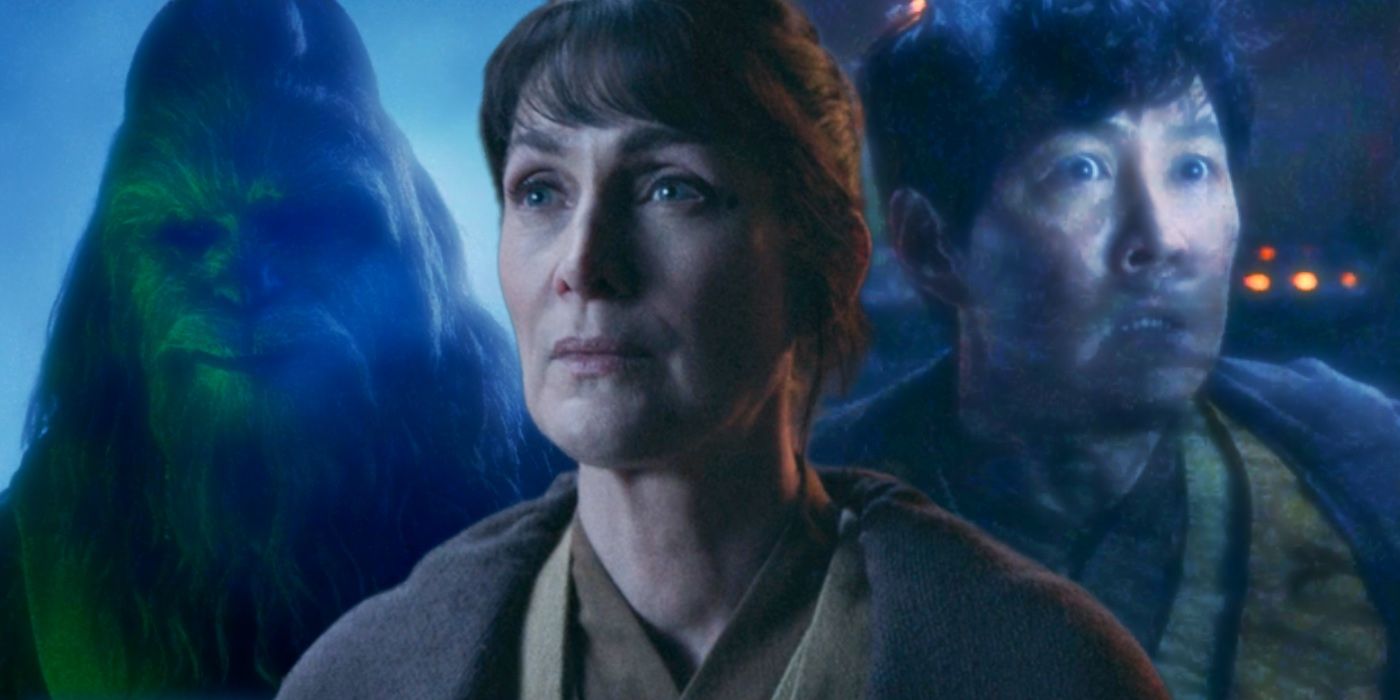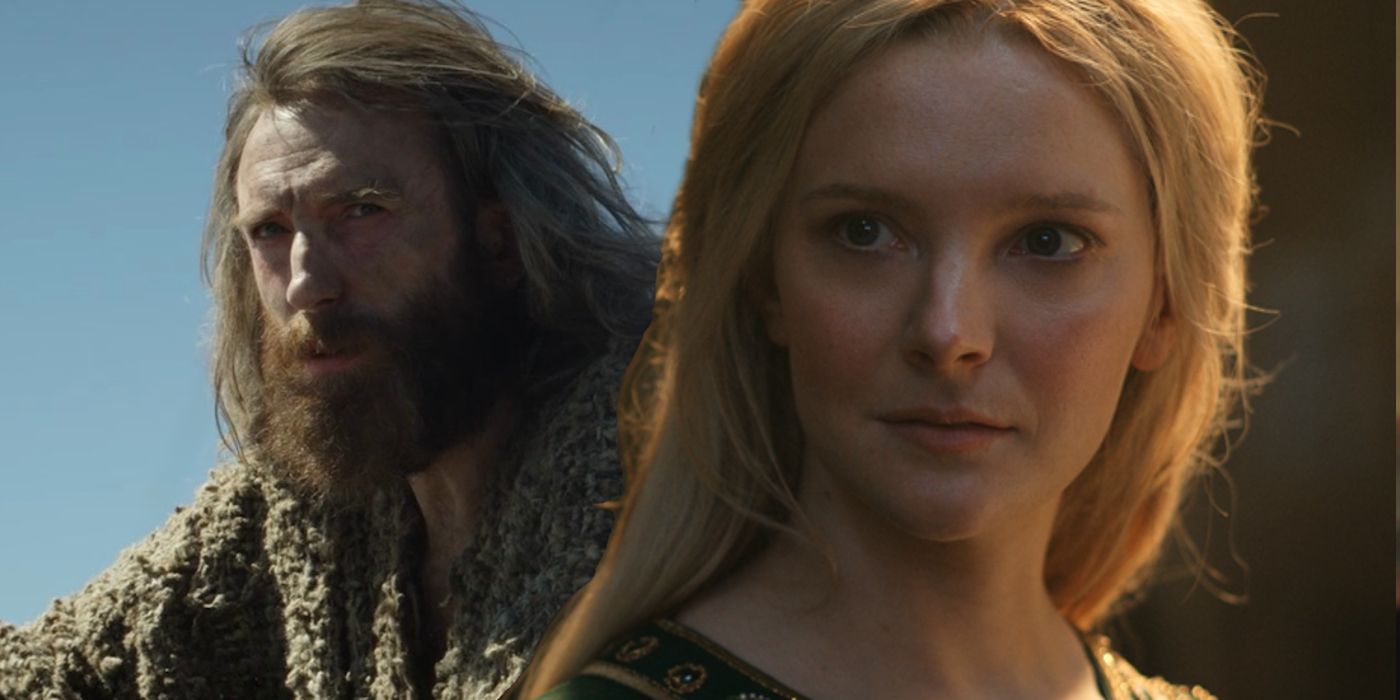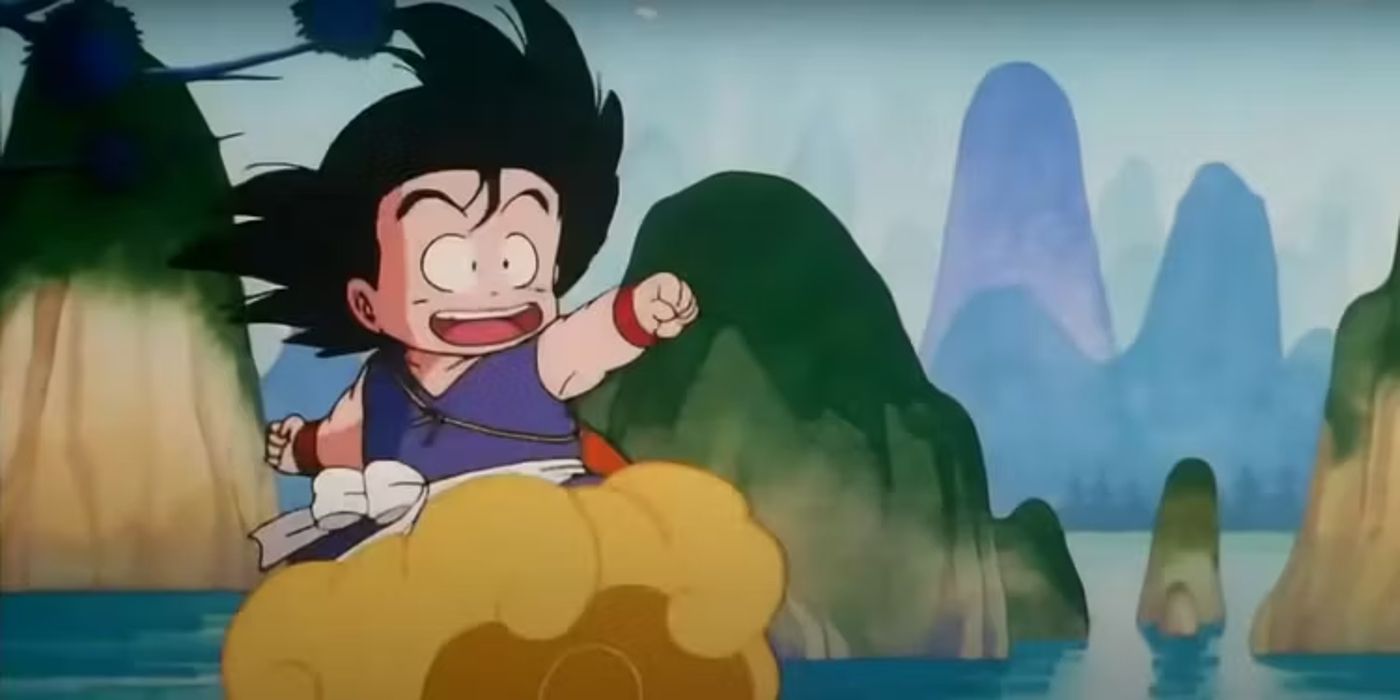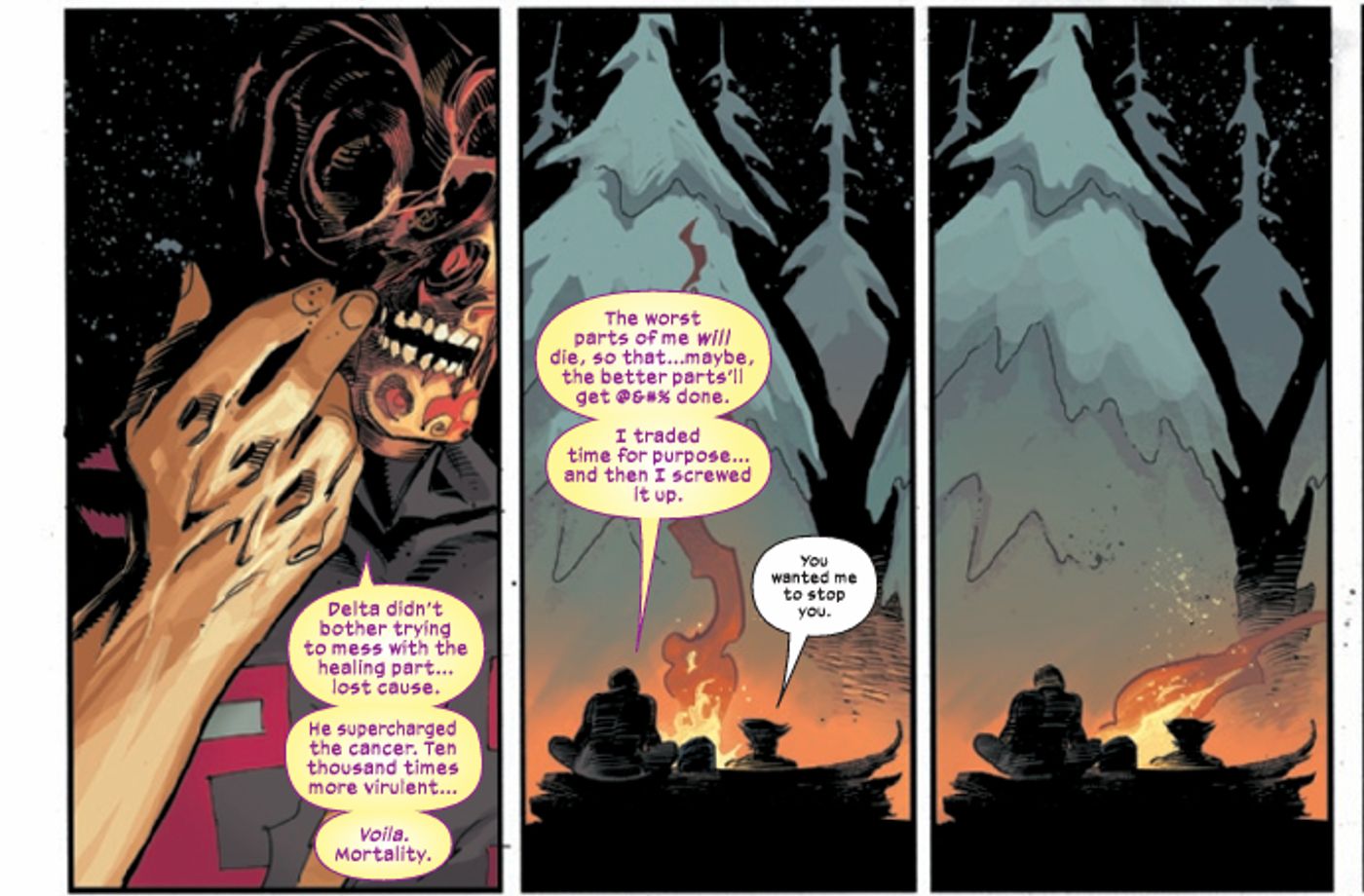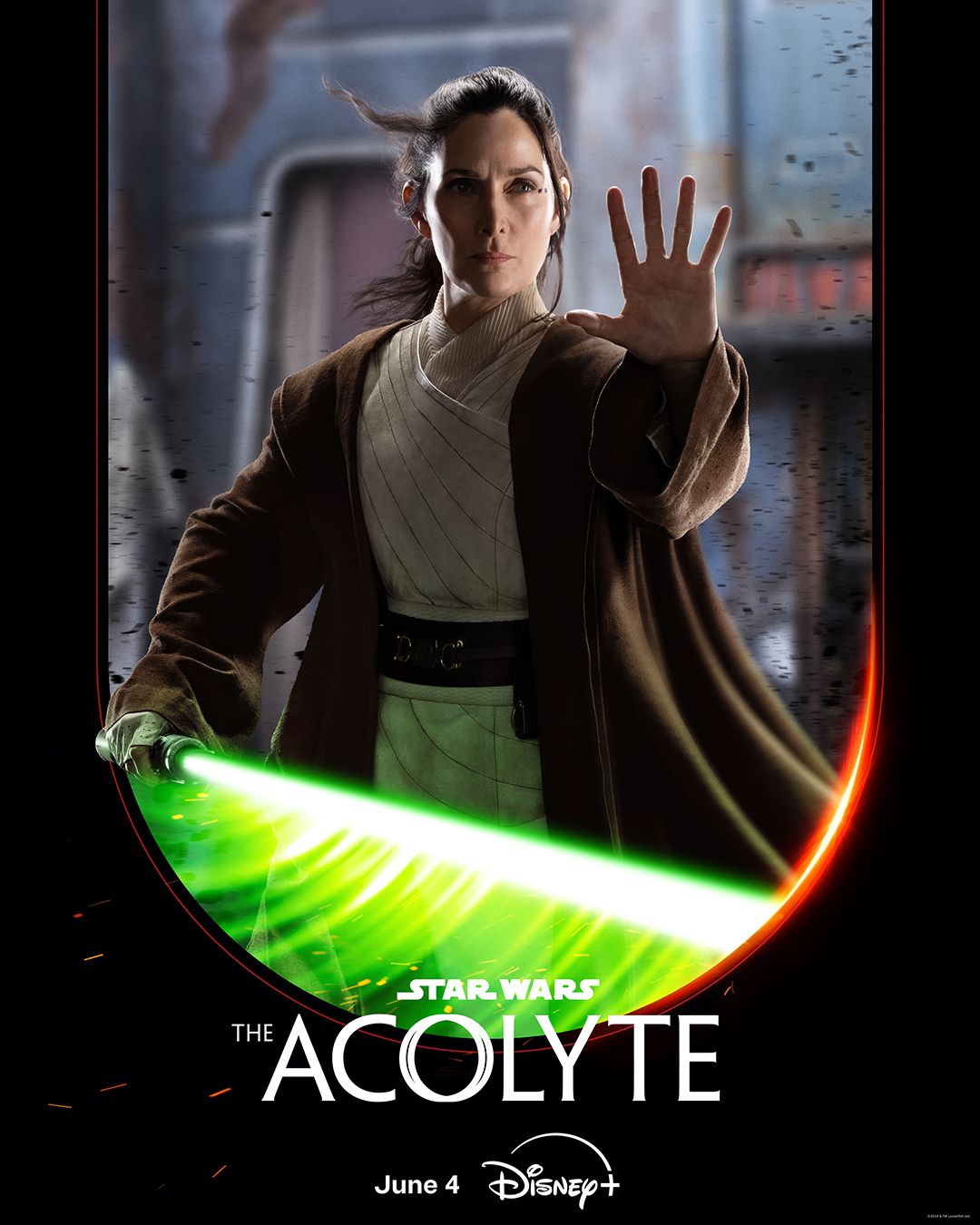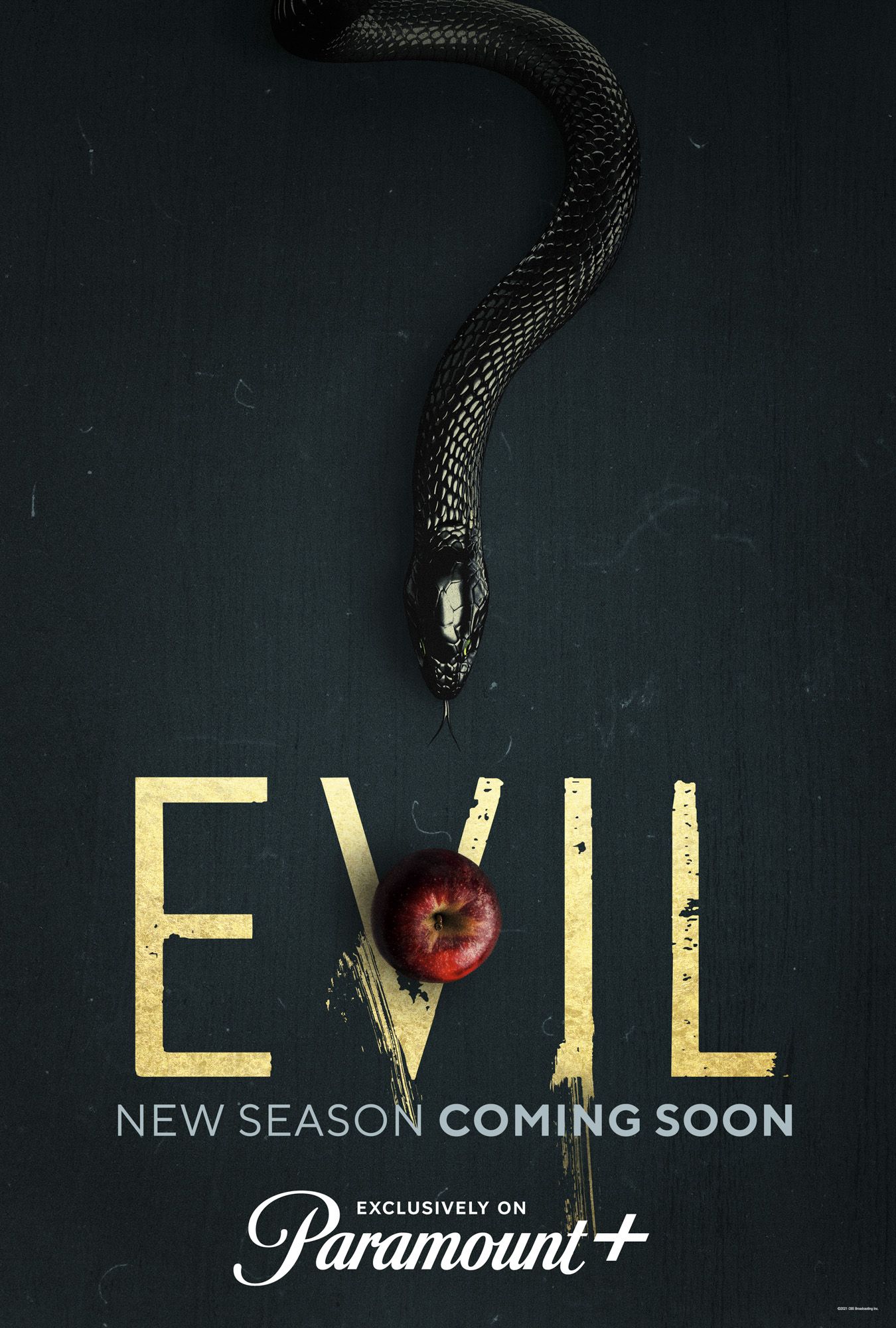Quentin Tarantino’s Reservoir Dogs is one of the most iconic debut movies of all time. It revitalized independent cinema in the early 1990s and it still holds up three decades later. In his first feature, Tarantino established a bunch of tropes and trademarks that he’s now renowned for, from graphic violence to soundtrack needle-drops to pitch-black humor.
With his second movie, Pulp Fiction, Tarantino proved he’s not a one-trick pony. All of the signature hallmarks that Q.T. established in Reservoir Dogs were solidified in Pulp Fiction.
Graphic Violence
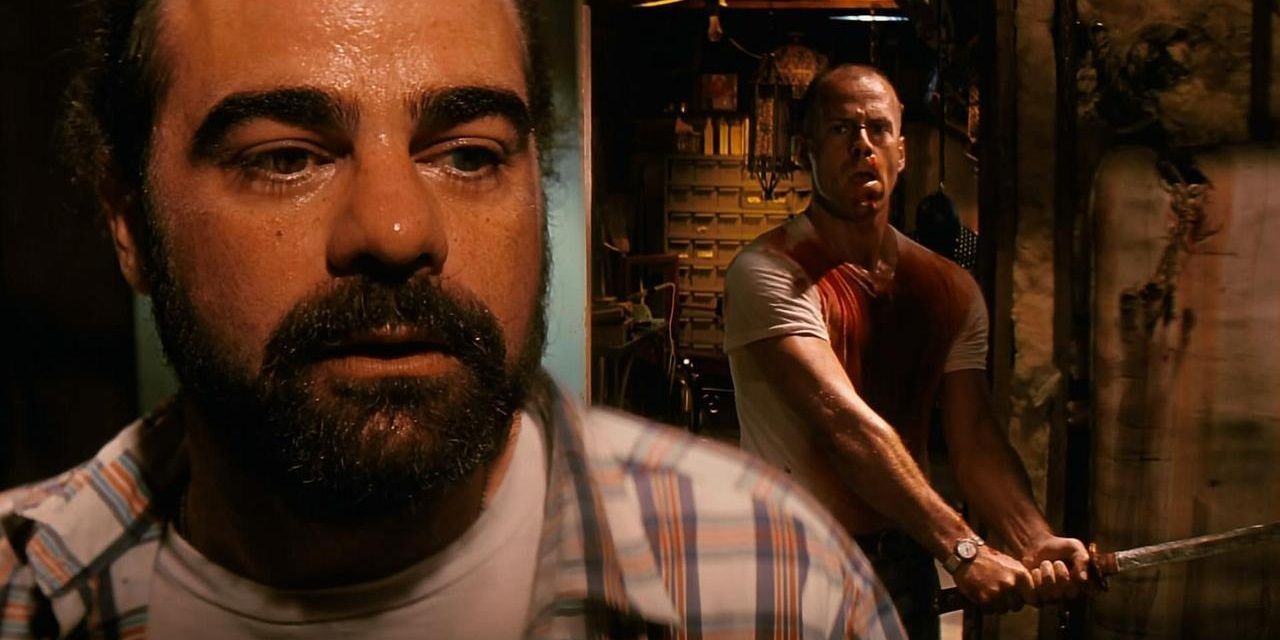
Tarantino’s filmmaking has always been defined by its violent content. Even Once Upon a Time in Hollywood, a dramedy about life in the film industry circa 1969, ends with an inglorious bloodbath. Pulp Fiction is no exception, featuring some of Tarantino’s most shocking scenes of violence.
Two of the lead characters kill people for a living, Butch goes back to the pawnshop basement to save Marsellus with a samurai sword, and the whole third story revolves around a blood-soaked corpse disposal.
Nonlinear Storytelling
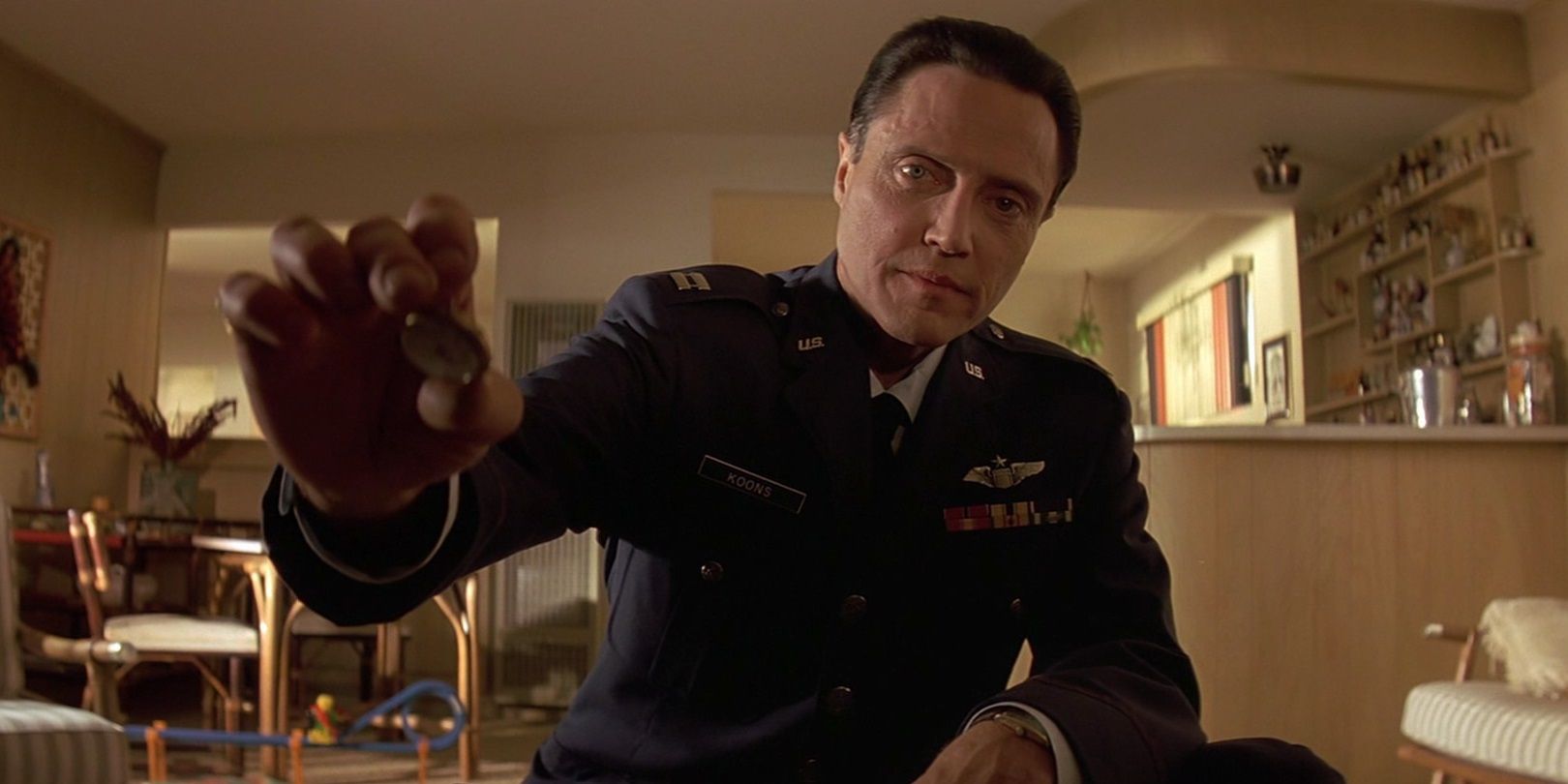
After dancing around the off-screen heist in Reservoir Dogs, Tarantino became renowned for nonlinear storytelling. His Oscar-winning script for Pulp Fiction jumps all over the timeline.
It follows three separate anthology stories that cross over with one another: Vincent takes the lead in the first story, then gets killed off in the second story, then takes the lead again in the third story.
Pop Culture References
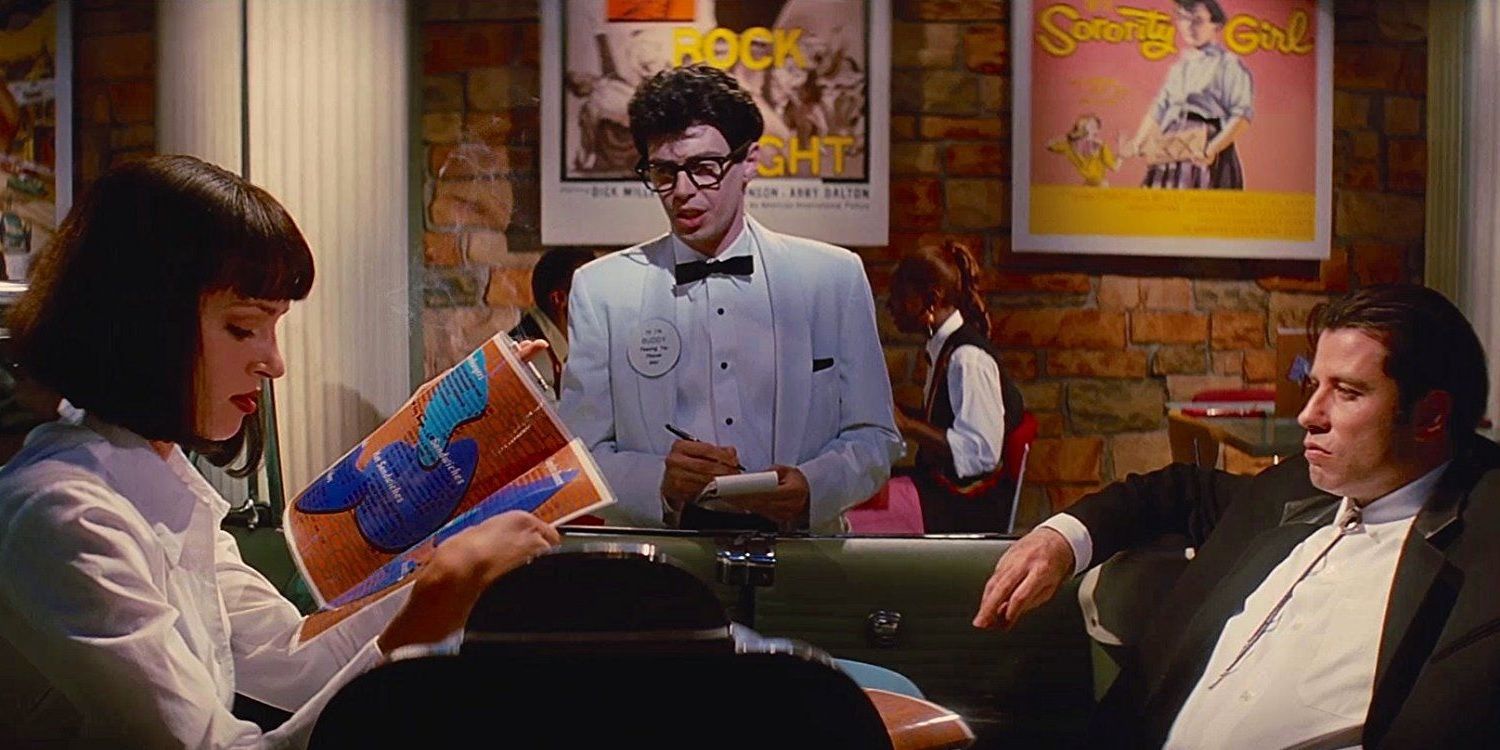
Tarantino’s movies make more references to popular culture than an episode of Family Guy. The jewel thieves debate who played Christie Love during a stakeout in Reservoir Dogs. The Bride quotes the Trix commercial before her climactic showdown with O-Ren in Kill Bill.
Pulp Fiction contains references to Fonzie, Flock of Seagulls, and Caine from Kung Fu. Jack Rabbit Slim’s is filled with nods to 1950s icons like Buddy Holly and Marilyn Monroe.
Genre Characters Discussing Mundane Things
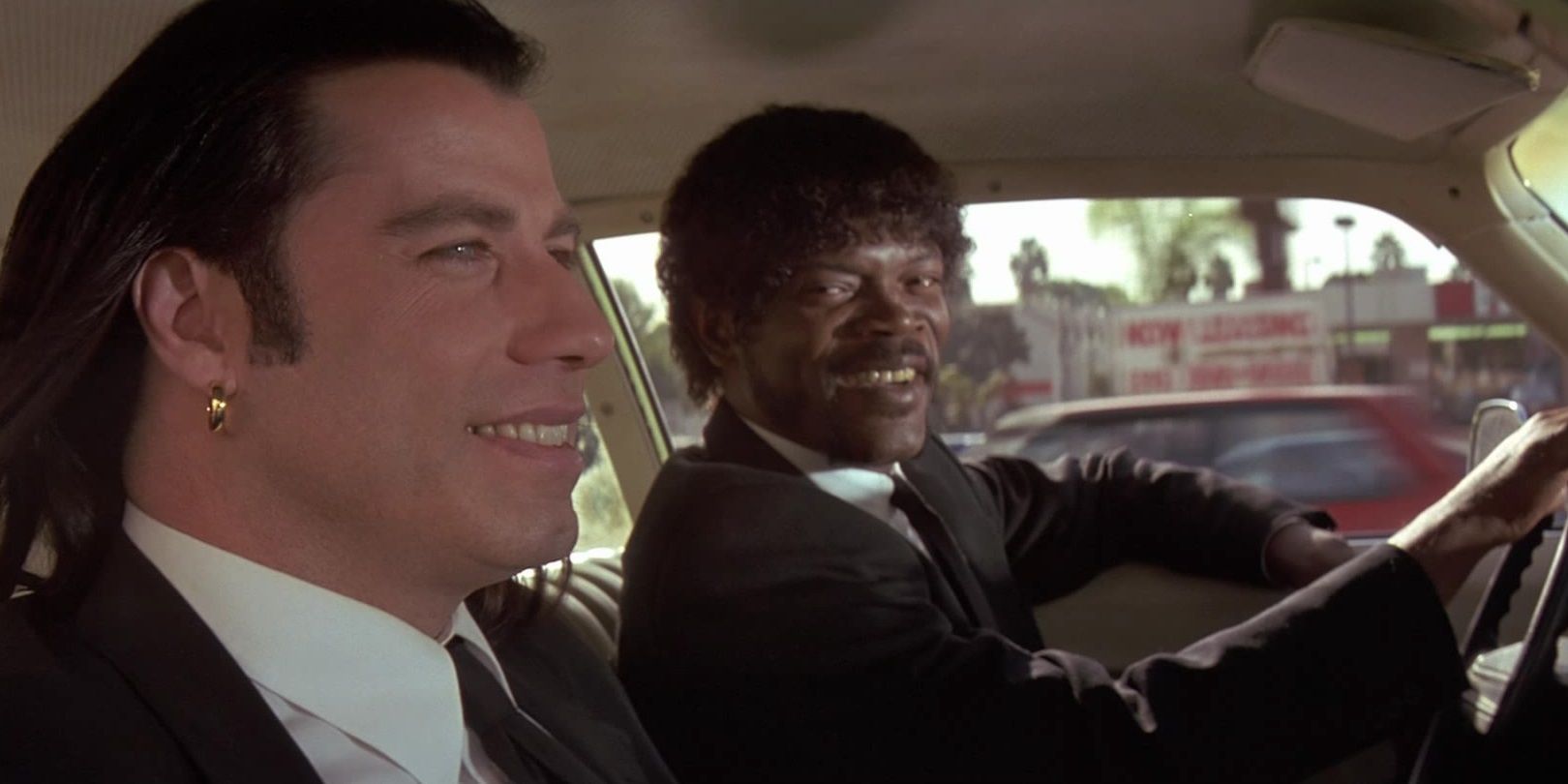
Tarantino’s character work is marked by humanizing genre archetypes with relatably mundane dialogue. This trope was established in the opening scene of Reservoir Dogs with debates about tipping etiquette and the meaning of “Like a Virgin.”
Pulp Fiction continued this tradition with a pair of contract killers who talk about the differences between the American and European McDonald’s menus on their way to a hit.
Homages To Existing Movies
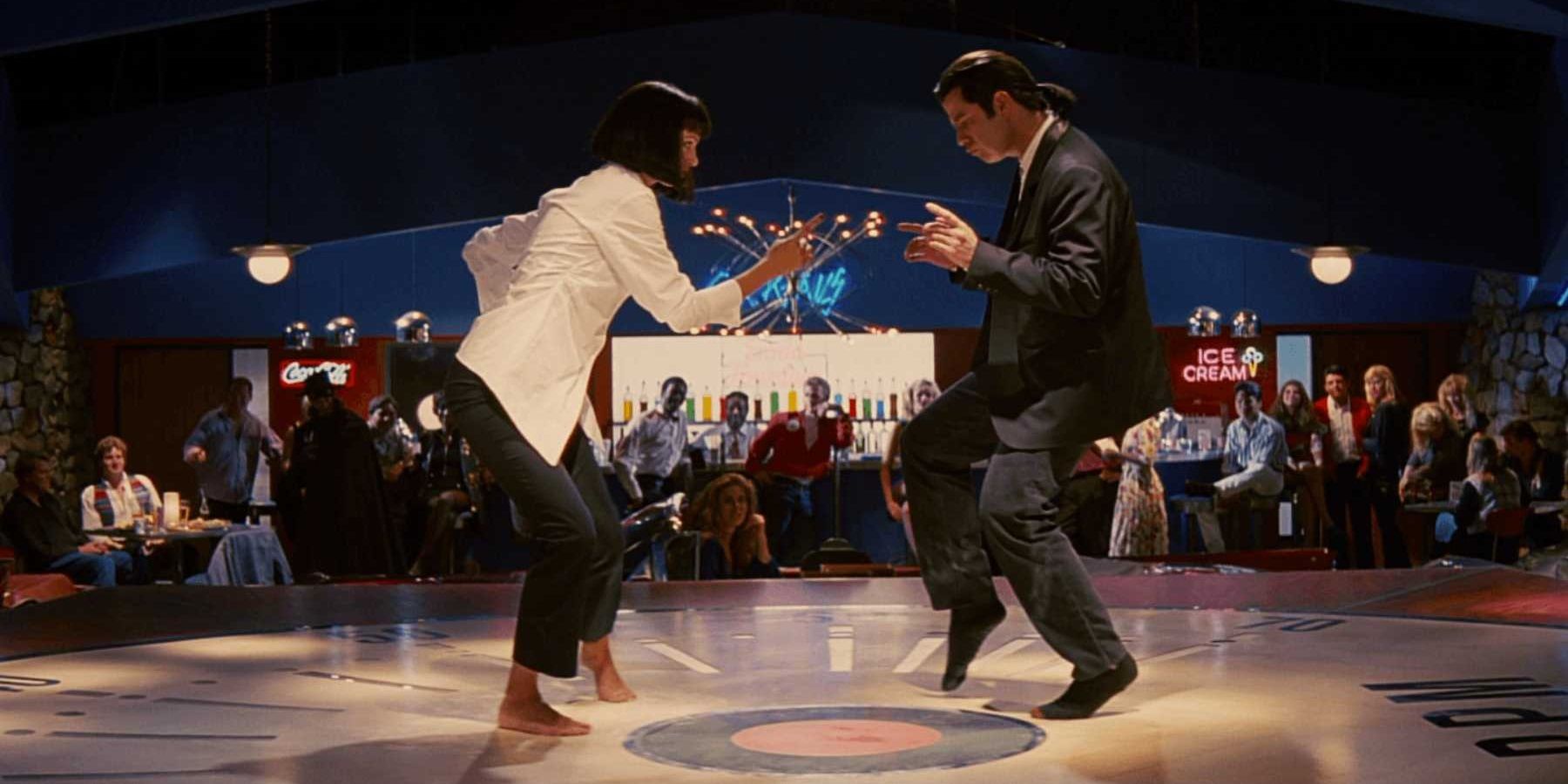
As wildly original as Tarantino’s movies are, they’re also heavily influenced by the cinema classics that inspired him to become a filmmaker in the first place. Pulp Fiction is riddled with homages to existing movies.
The Ezekiel 25:17 quote isn’t taken from the Bible; it’s from the Sonny Chiba martial arts movie Karate Kiba. The Jack Rabbit Slim’s dance contest is a delightful blend of 8½, Bande à part, and The Aristocats.
Excessive Profanity
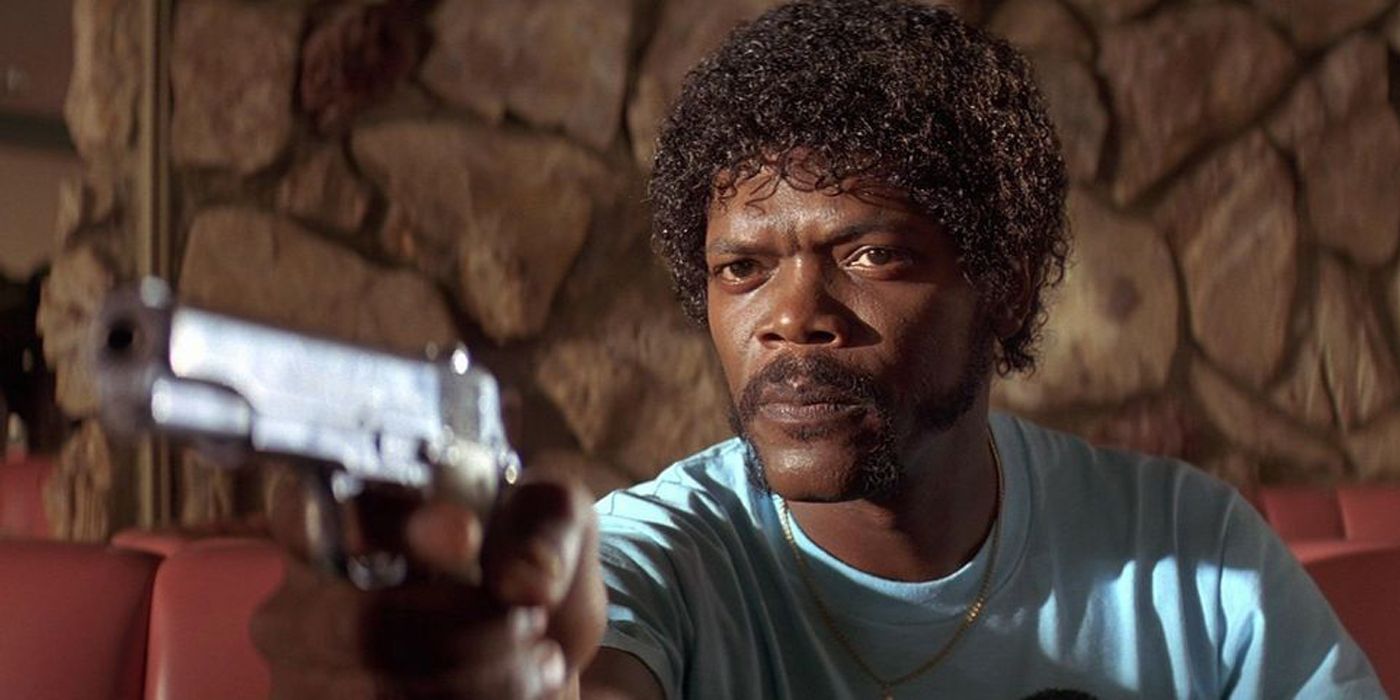
Tarantino’s dialogue is known for its lyrical, poetic quality – pushing thought-provoking themes through seemingly mundane everyday conversations – but it’s also known for featuring a ton of profanity.
With a grand total of 265 F-bombs (nearly two F-bombs a minute), Pulp Fiction has one of the highest F-bomb counts in movie history. The role of Jules Winnfield made Samuel L. Jackson synonymous with the word “motherf****r.”
Ensemble Cast
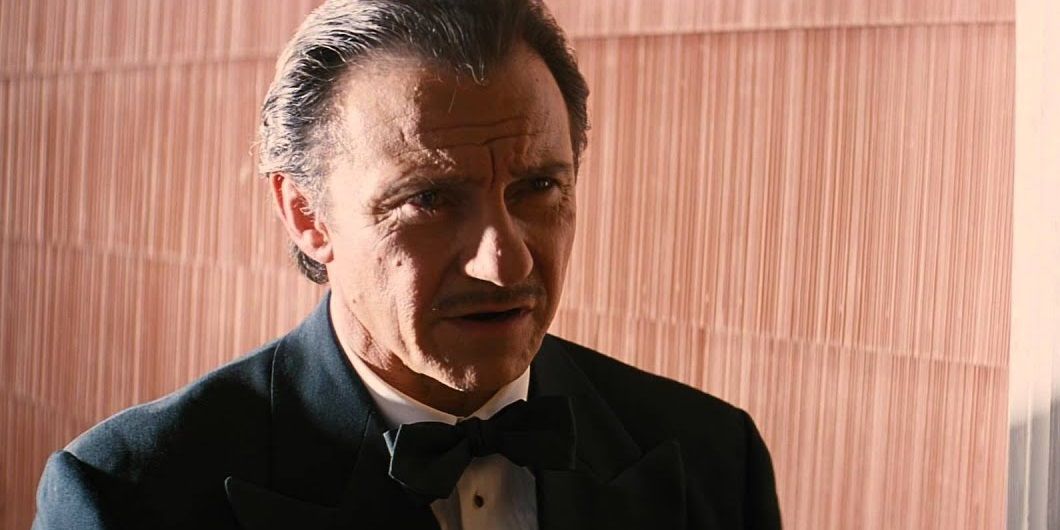
Apart from the occasional undeniable lead, like title characters Django and Jackie Brown, Tarantino’s movies tend to feature sprawling ensemble casts. Inglourious Basterds initially sets up the eponymous Nazi killers as the leads, then goes off on a tangent to explore Shosanna’s story and takes a detour into a basement bar for a sizeable 20-minute chunk of the runtime.
Thanks to its anthology format, Pulp Fiction is a true ensemble piece. Then-unknowns like Samuel L. Jackson and Uma Thurman have equal footing with big stars like John Travolta and Bruce Willis.
Fictional Product Placement
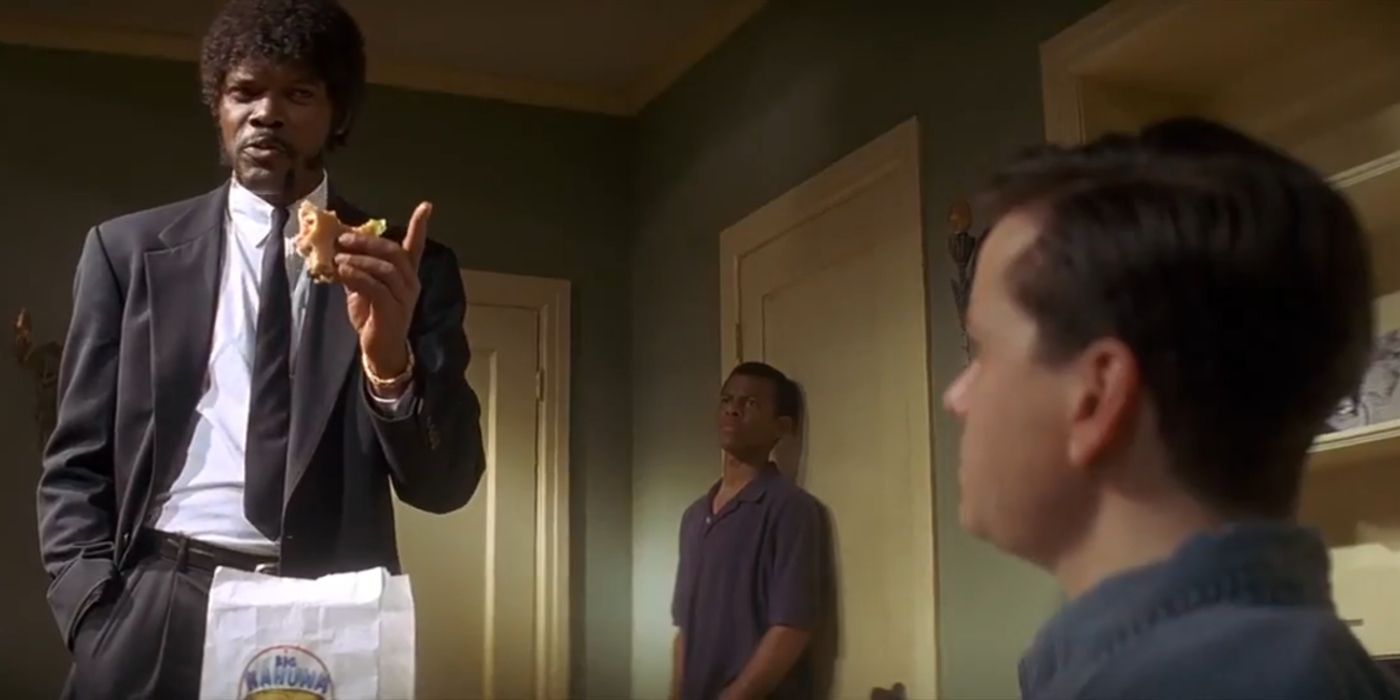
Tarantino hates product placement in movies, so he specifically avoids advertising real corporations in his films and instead features fictional products that only exist in the Tarantino-verse. In Pulp Fiction, Mia smokes Red Apple cigarettes.
Jules and Vincent discuss McDonald’s in the car, but that’s the only free advertising that McDonald’s gets from Tarantino. At Brett’s apartment, Jules samples a hamburger from the fictional Big Kahuna Burger and says, “Mmm, that is a tasty burger!”
Soundtrack Needle-Drops
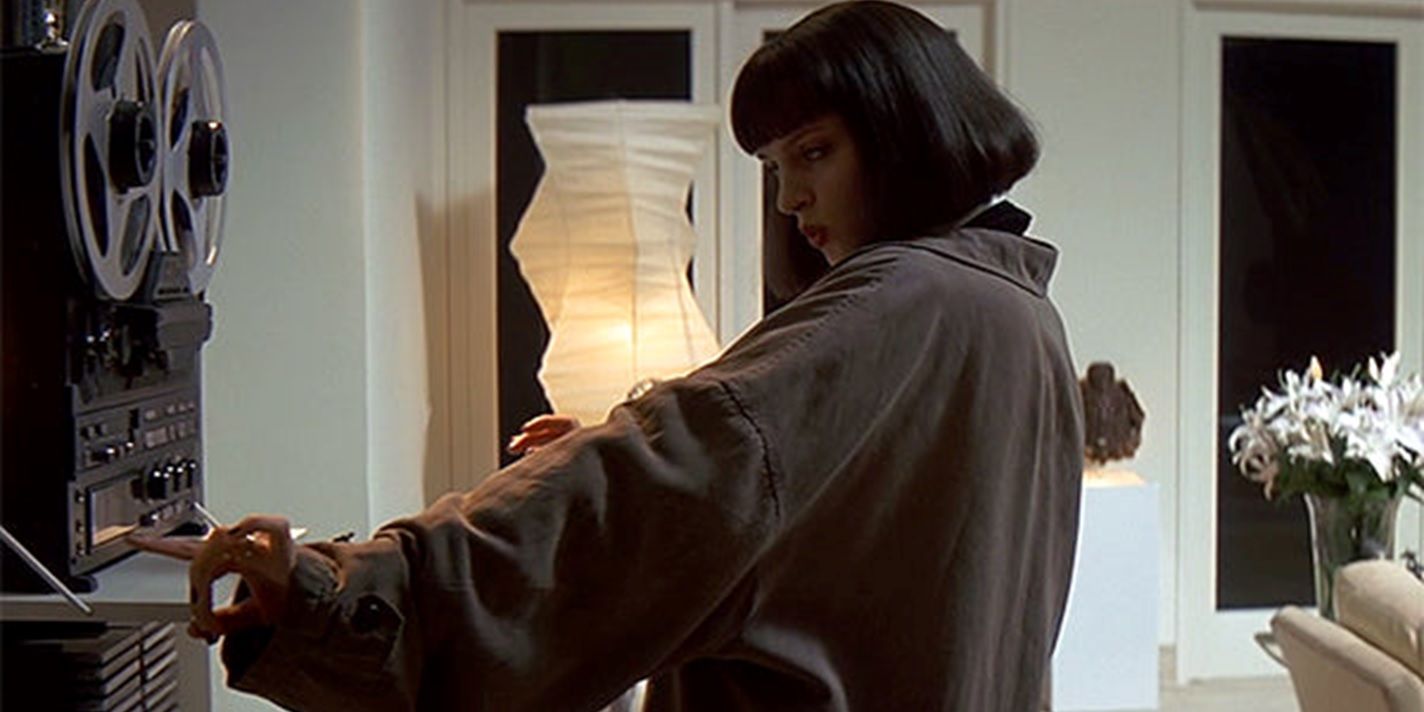
Since playing Stealers Wheel’s “Stuck in the Middle with You” over Mr. Blonde torturing a cop in Reservoir Dogs, Tarantino has been known for filling his movies with awesome needle-drops on the soundtrack.
He plays Dick Dale’s “Misirlou” over the opening credits, Chuck Berry’s “You Never Can Tell” at the Jack Rabbit Slim’s dance contest, and the Revels’ “Comanche” over Butch’s katana-wielding retribution in the pawnshop basement. There’s a literal needle-drop when Mia plays Urge Overkill’s cover of the Neil Diamond song “Girl, You’ll Be a Woman Soon” on her record player.
Dark Humor
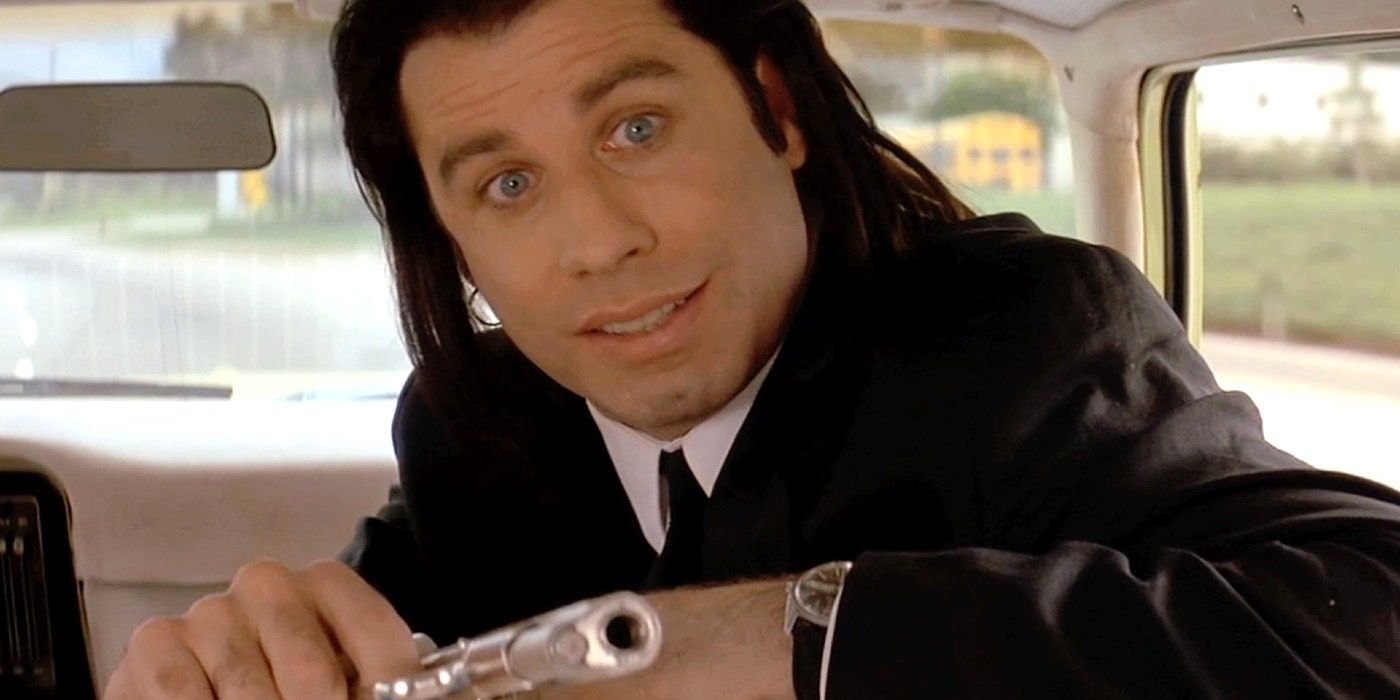
Tarantino’s movies are primarily dramas, but they’re also packed with humor. And since the subject matter tends to be violent, the humor tends to be dark. The writer-director played a torture scene for laughs in one of Reservoir Dogs’ most controversial moments.
He stepped up the pitch-black humor in Pulp Fiction, which is basically a full-blown comedy. Ruthless mob hits are punctuated by Seinfeldian banter. When Vincent accidentally shoots Marvin in the face, there’s a hilarious juxtaposition of harrowing violence with Vincent’s casual response: “Oh, man, I shot Marvin in the face.”
